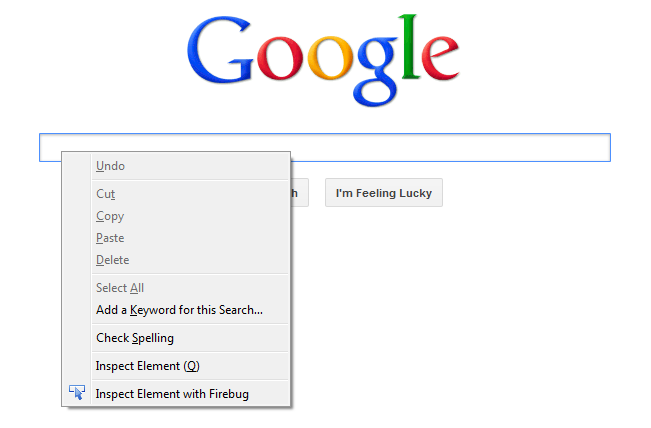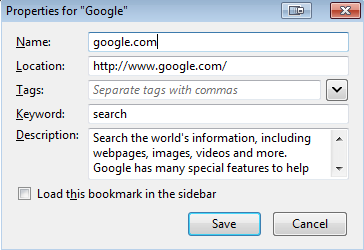 The popular open-source browser Firefox is awesome right when you download it. And by adding some of the awesome addons available for it, Mozilla Firefox just gets more and more appealing.
The popular open-source browser Firefox is awesome right when you download it. And by adding some of the awesome addons available for it, Mozilla Firefox just gets more and more appealing.
But when you look under the hood, and there are a number of hidden tips and tricks available that will crank the browser up for you – making it faster, easier, and more efficient to use.
Here are 10 really awesome Firefox tricks you can apply right now:
1. Add more screen space by making you icons smaller – Go to View >> Toolbars >> Customize and check the “Use small icons” box.
2. Use Smart Keywords – If there is a search term you enter a lot, this is a great tool that not many people take advantage of. Visit your favorite search engine, then right-click on the search box. Select “Add a Keyword for this search” give the keyword a name and an easy-to-type and easy-to-remember shortcut name and save it. Now, when you want to do a search for that term, go to Firefox’s address bar, type the keyword and press return. Instant search! You can do this with any search engine.
3. Keyboard shortcuts – It may take a little bit of time to master all of these, but as soon as you do, your browsing will be a lot faster – not to mention you won’t have to use a mouse anymore. Here are some of the most popular keyboard shortcuts for Firefox.
- Spacebar (page down)
- Shift-Spacebar (page up)
- Ctrl+F (find)
- Alt-N (find next)
- Ctrl+D (bookmark page)
- Ctrl+T (new tab)
- Ctrl+K (go to search box)
- Ctrl+L (go to address bar)
- Ctrl+= (increase text size)
- Ctrl+- (decrease text size)
- Ctrl-W (close tab)
- F5 (reload)
- Alt-Home (go to home page)
4. Auto complete – Here’s another keyboard shortcut, but less known and even more useful. Go to the address bar (Control-L) and type the name of the website without the “www” or the “.com” Let’s say “google”. Then press Control-Enter, and it will automatically fill in the “www” and the “.com” and take you there – like magic! For .net addresses, press Shift-Enter, and for .org addresses, press Control-Shift-Enter.
5. Tab Navigation – Instead of using the mouse to select different tabs that you’ve opened, use your keyboard! Here are the shortcuts for that:
- Ctrl+Tab (rotate forward among tabs)
- Ctrl+Shft+Tab (rotate to the previous tab)
- Ctrl+1-9 (choose a number to jump to a specific tab)
6. Mouse shortcuts – Sometimes you are already using your mouse and it’s just a lot easier to use a mouse shortcut than to switch over to your keyboard. Check out these really cool tricks for your mouse on Firefox:
- Middle click on link (opens in new tab)
- Shift-scroll down (previous page)
- Shift-scroll up (next page)
- Ctrl-scroll up (decrease text size)
- Ctrl-scroll down (increase text size)
- Middle click on a tab (closes tab)
7. Delete items from address bar history – Mozilla Firefox’s ability to automatically show previous URLs you’ve visited, as you type, in the address bar’s drop-down history menu is very cool. But sometimes you just don’t want those URLs to show up. Go to the address bar (Ctrl-L), start typing an address, and the drop-down menu will appear with the URLs of pages you’ve visited with those letters in them. Use the down-arrow to go down to a web address you want to delete, and press the Delete key to make it gone for good.
8. Add a keyword for a bookmark – Go to your bookmarks a whole lot faster by giving them keywords. Right-click the bookmark and then select Properties. Put a short keyword in the keyword field, save it, and now you can type that keyword in the address bar and it will immediately go to that bookmark.
9. Speed up Firefox – If you have a broadband connection, you can use pipelining to speed up you page loads. This allows Firefox to load multiple things on a page at once, instead of one at a time (by default, it is optimized for dialup connections). Here’s how you do it:
- Type “about:config” into the address bar and hit return. Type “network.http” in the filter field, and change the following settings (double-click on them to change them):
- Set “network.http.pipelining” to “true”
- Set “network.http.proxy.pipelining” to “true”
- Set “network.http.pipelining.maxrequests” to a number like 30. This will allow it to make 30 requests at once.
- Also, right-click anywhere and select New-> Integer. Name it “nglayout.initialpaint.delay” and set its value to “0″. This value is the amount of time the browser waits before it acts on information it receives.
10. Limit RAM usage – If Firefox is taking up too much of the memory on your computer, you can limit the amount of RAM it is allowed to use. Go to about:config, filter “browser.cache” and select “browser.cache.disk.capacity”. It’s set to 50000, but you can lower it, depending on how much memory you have. Try 15000 if you have between 512MB and 1GB ram.
You can also reduce RAM usage even further for when Firefox is minimized. This setting will move Firefox to your hard drive when you minimize it, taking up much less memory. And there is no noticeable difference in speed when you restore Firefox, so it’s definitely worth a go. Again, go to about:config, right-click anywhere and select New-> Boolean. Name it “config.trim_on_minimize” and set it to TRUE. You have to restart Firefox for these settings to take effect.






